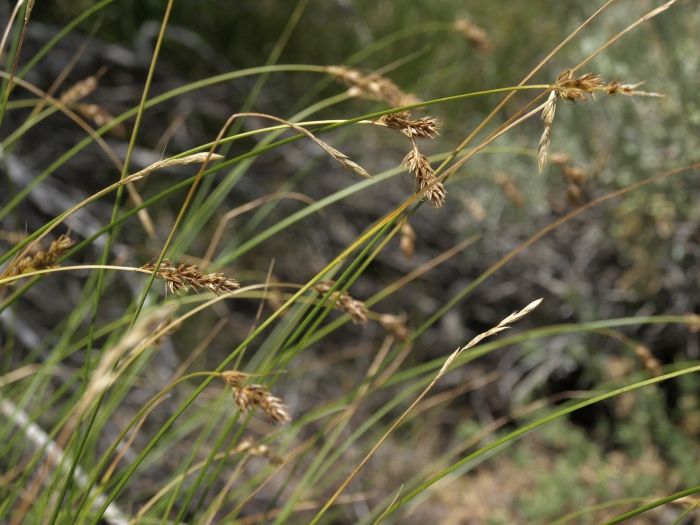Western Sedge
(Carex occidentalis)
Western Sedge (Carex occidentalis)
/
/

Jim Morefield
CC BY 4.0
Image By:
Jim Morefield
Recorded By:
Copyright:
CC BY 4.0
Copyright Notice:
Photo by: Jim Morefield | License Type: CC BY 4.0 | License URL: http://creativecommons.org/licenses/by/4.0/ | Rights Holder: Jim Morefield | Publisher: iNaturalist | Date Created: 2016-07-29T14:05-07:00 |


















Estimated Native Range
Summary
Carex occidentalis, commonly known as Western Sedge, is a perennial herb native to various ecosystems, including wet meadows, streambanks, and moist grasslands in the southwestern United States, extending northward to Montana. It typically grows to a height of up to 35 inches (89 cm) and is characterized by its narrow, grass-like leaves and rounded flower spikes that appear in late spring to early summer. The flowers are not particularly showy, but they do add a fine-textured element to the plant’s overall appearance.
Western Sedge is valued for its adaptability to wet conditions and is often used in riparian restoration projects, rain gardens, and as a naturalizing element in moist garden areas. It thrives in full sun to part shade and prefers consistently moist soils, but can tolerate periods of dryness once established. This sedge is low maintenance and can be an effective ground cover in suitable conditions. However, it can spread aggressively in optimal growing conditions, so gardeners should consider this when planting.CC BY-SA 4.0
Western Sedge is valued for its adaptability to wet conditions and is often used in riparian restoration projects, rain gardens, and as a naturalizing element in moist garden areas. It thrives in full sun to part shade and prefers consistently moist soils, but can tolerate periods of dryness once established. This sedge is low maintenance and can be an effective ground cover in suitable conditions. However, it can spread aggressively in optimal growing conditions, so gardeners should consider this when planting.CC BY-SA 4.0
Plant Description
- Plant Type: Grass
- Height: 1-2.5 feet
- Width: 1-2.5 feet
- Growth Rate: Moderate
- Flower Color: N/A
- Flowering Season: Spring, Summer
- Leaf Retention: Deciduous
Growth Requirements
- Sun: Full Sun, Part Shade
- Water: Medium, High
- Drainage: Medium, Slow
Common Uses
Erosion Control, Low Maintenance, Water Garden
Natural Habitat
Wet meadows, streambanks, and moist grasslands
Other Names
Common Names:
Scientific Names: , Carex occidentalis, Carex hookeriana var. occidentalis, Carex neomexicana,
GBIF Accepted Name: